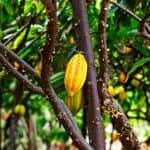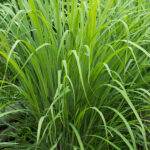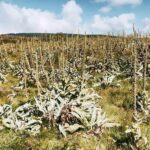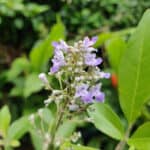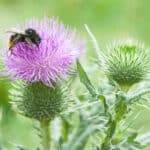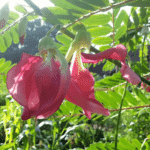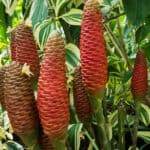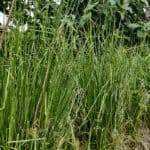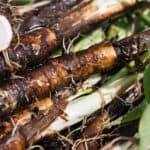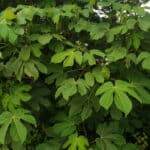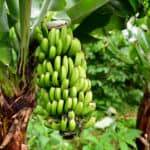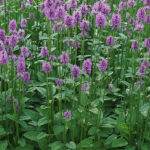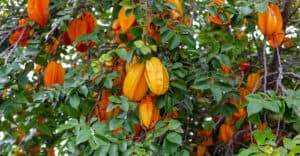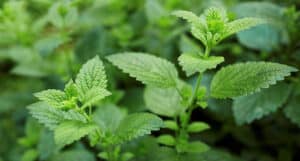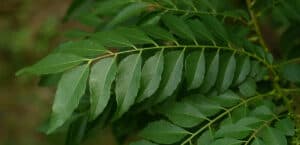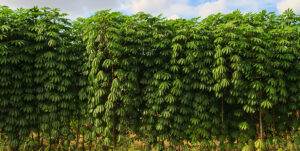From dense blocky bells to the tapered bull’s horn varieties, from padrons to shishitos, from candy-sweet to sweat-inducingly spicy, the world of peppers is vast and diverse. They feature in all kinds of global cuisines, and specific types have very devoted followings. It’s well-worth growing a few different kinds of pepper plants in your garden to sample the possibilities. These heat-loving plants are relatively easy to grow when raised and tended properly.
The Pepper Universe
Peppers make a great choice for the home gardener, in part because you can trial lots of different types and varieties and compare them with one another. There really is a whole pepper universe out there. Here is an incomplete list of what’s more widely available:
Sweet Peppers:
Sweet pepper fruits vary in their size, shape, coloration, and the thickness of their walls. Some are tastiest for fresh eating; some are bred specifically to be fried or roasted.
Popular types (with variety examples in italics):
Bell (the old blocky standard): Red Knight, Ace, King of the North, Purple Beauty
Corno di Toro (literally “Horn of the Bull,” a large tapered pepper): Carmen, Escamillo
Lunchbox (smaller snacking peppers): Lunchbox Red, Yellow, Orange
Hot Peppers:
The heat of chili peppers is measured on the Scoville scale using “Scoville heat units.” These units indicate the amount of Capsaicin present in the fruit’s seeds in particular and can tell you the level of spiciness to expect.
Below are a handful of popular hot pepper varieties, listed in order from least to most spicy:
Poblano
Jalapeno
Serrano
Cayenne
Habanero
Oddballs:
There are lots of peppers that defy categorization as sweet or hot. They might be a mix of both, or grown for particular purposes (frying, pickling, dehydrating, etc).
Here are a few examples:
Banana
Shishito
Hungarian Wax
Padron
Paprika
The next time your seed catalogs come in the mail, take some time to really pore over all of the varieties available. There truly are loads!
Propagation
Starting Indoors from Seed (Recommended)
Start your pepper seeds about 8 weeks before you intend to transplant the seedlings out. In Southeast Michigan, we look to plant our outdoor peppers once the threat of frost has fully passed – typically the first week of June. So we count back 8 weeks, and seed somewhere between the last week of March and the first week of April.
Sow your seeds into cells or open flats to begin with. The size of these containers doesn’t matter as much at this stage, because you’ll be transferring your tiny seedlings to roomier conditions later. The depth of the containers you choose is important, however, because you will likely need supplemental heat to encourage proper germination. Pepper seeds germinate best at temperatures between 80 and 90℉. For whatever reason, hot pepper plants in particular seem most finicky about these germination temps. To achieve proper conditions, we use heat mats underneath our pepper flats. With that added heat, peppers typically germinate within one week. Without it, expect much slower and erratic germination.
Transplanting to Roomier Digs
Once the tiny seedlings have grown their “true leaves,” gently transplant them into either larger cells (a flat with 50-72 cells, say), 4” pots, or 2” soil blocks. Be sure to disturb the plants’ roots as little as possible during this process, and be extra careful when handling the stems. We make an effort to delicately hold the plant by its leaves when moving it from one place to another.
Peppers continue to need to stay warm throughout their growth, and can become stunted if cold, especially at temperatures below 40℉. Whatever supplemental heat you can offer them during their time indoors will certainly help. Their happy place seems to be between 60℉ and 85℉. These are all ideal scenarios, of course, and I can tell you that we do not always reach “ideal” on our farm. Do the best you can, with an eye towards avoiding the super chilly temperatures.
Since pepper seedlings occupy their flats or pots for upwards of 6 weeks, it’s good to give them supplemental feedings. For their last month in containers, we fertilize them weekly with a good drink of diluted fish emulsion.
Site Prep
Two words: Full Sun! Pepper plants need full sun to grow, and the fruits need full sun to ripen. These are heat loving annuals. And while even peppers can get heat-stressed (they exhibit this by dropping their blossoms), they truly cannot thrive in shade. Well-drained ground, enriched with compost, is ideal. If you know your soils are lacking in calcium or phosphorus, add amendments (bone meal, seaweed, kelp) to ensure strong fruit development.
Planting Peppers Out
Don’t rush this part! Take stock of your seedlings, and see where they’re at. If they are looking robust and healthy, it’s time to plant them outside. Plants that are leggy or stressed to the point of flowering and fruiting are likely rootbound, and would benefit from being planted out, too. If your plants are looking small, thin, or weak, however, do them a favor and delay planting a week or two.
A trip to a friend’s farm a handful of years ago was a great lesson in plant spacing. Whereas I had been growing healthy, if small, pepper plants, he was growing pepper bushes! The difference? His peppers were planted 2 rows/bed instead of 3. Peppers will definitely take advantage of the extra space you give them. We now grow our peppers at a spacing of 18” within rows, and our rows at least 2’ apart. Our plants are noticeably larger and leafier, which helps greatly in preventing sunscalding of the fruits. Plant peppers slightly deeper than their root ball line to give the seedlings a little extra sturdiness
In cooler climates, peppers benefit greatly from being planted into a black fabric or plastic mulch. This heats the soil throughout the growing period, and helps the plant cope with cooler nighttime temperatures in particular. We use a black landscaping fabric that has held up for several seasons now. Holes are cut into the fabric at the proper spacing ahead of time; you can even use a propane torch to burn more perfect circles into the fabric.
Plants that become truly laden with fruit could use some support in staying upright. We will often pound stakes into the ground every few feet on the outside of our pepper bed, and string taut twine to hold the plants up. Pepper plants are particularly susceptible to wind storms – and their own gravity. A little trellising really helps prevent the plants from lodging (growing any other direction than vertically) and the fruits from rotting on the ground.
Irrigation
An inch of water per week is perfect for peppers, who certainly do not want to be water-logged. We use a drip irrigation system. Peppers, along with many other heat-loving plants, do not appreciate water on their leaves.
Fertilization
In the early stages of our peppers’ growth, a couple weeks after they’ve been transplanted outdoors, we apply a homemade compost tea weekly. This tea, a truly stinky brew, is a mix of nettles, comfrey, and eggshells, fermented with water for two weeks in 5 gallon buckets. Can you smell it?! We dilute this concoction to a solution of 5 parts water: 1 part stinky brew, and then apply about a quart of it to each plant. The impact is quick and obvious! The plants put on fast green growth and their stems thicken up nicely. Be sure to quit applying nitrogen-rich amendments once the plants have moved on to flower and fruit production.
Pest Pressure
Peppers – and hot peppers in particular – have relatively few pests in the garden. Our main culprit is the cutworm, a drab gray grub that cuts young plants down at the base. Beneficial nematodes, applied in the Spring, can help alleviate cutworm populations. A plant collar, placed at the bottom of the seedling where it meets the soil, can deter the grubs, too. If you find a plant that has been chopped down by cutworm, dig around its base; you’ll often find the grub right there.
Disease Pressure
Disease pressure within a pepper planting tends to look like either leaf spots or fruit rot. The best measures against disease are preventative ones: crop family rotation, adequate airflow, clearing the area of fallen fruit, and avoiding overhead watering.
Harvesting
The color of full ripeness achieved by your peppers depends on the variety. Peppers truly can grow in all shades of the rainbow – deep red to orange to yellow to purples and browns. Many sweet peppers, including most bells, can be harvested anywhere in their color spectrum: from the slightly bitter green to their full ripened sweetness.
The spiciness of hot peppers can vary widely, both according to their level of ripeness – and even the environmental conditions under which they were grown. We have had years where our jalapenos are spicier than some of our hottest peppers. It’s a little bit of a mystery each season.
Harvesting your first peppers early will encourage the plants to put on more blooms and fruits. Pull or cut each pepper at the point where the fruit meets the main stem. Be gentle. Peppers are sometimes very brittle plants whose branches break easily.
Just before the season’s first frost comes, pull your pepper plants up, roots and all. Shake or wash the roots, and bring the whole plants indoors. With the added inside warmth, your peppers will continue ripening this way on the plant. Ripe peppers can be kept in the refrigerator, in a container or plastic bag, for at least a couple of weeks.
Seed Saving
Saving seeds from your open-pollinated pepper plants is a relatively easy process. Peppers have what are called “perfect flowers,” which means they are very efficient at self-pollination. Cross-pollination among peppers is not a huge issue, but it’s also not impossible. For this reason, if you are interested in seed saving, it’s a good idea to leave some distance between your hot and sweet pepper plantings.
Seeds can be removed from fully ripened pepper fruits (you may as well leave them on the plants until right before frost). Use caution – and gloves! – when handling the seeds of hot peppers. Allow them to fully dry out on a screen indoors. Then transfer them to a bag or packet for use next season.
Processing
Sweet peppers are one of my favorite things to freeze for Winter use. It’s so easy! They can be chopped raw, packed into freezer bags, tupperware, or glass containers, and then frozen. Their bright flavor is the perfect addition to soups, stir fries, fajitas, you name it.
Hot peppers can also be frozen in the same way, or, better yet, pulsed in a food processor with garlic and olive oil into a flavorful paste that can be used to add warmth to Winter meals.
Homemade hot sauce is an excellent option if you end the season with a glut of ripe hot peppers. There are delicious recipes for both vinegar-based sauces and fermented varieties.
Parting Thoughts
The wide world of peppers is open and available to the home gardener who can tend their seedlings with proper warmth and care. These delicious fruits add color, warmth, and spice to our meals all year long.

